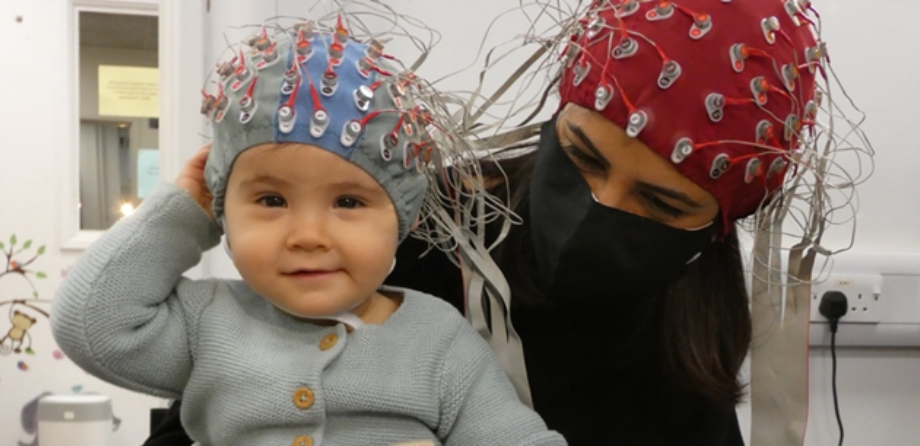
Promoting language, communication and emotion regulation in children: neuroscience-based tips
In Professor Sam Wass’ research, he takes live ‘dual-brain’ recordings from young children and adults while they engage in interactions that involve language, communication and emotion regulation. His research, consistent with findings from other researchers around the world, has suggested that letting young children lead an interaction is crucial.
For example, children’s brains encode information better if you wait for a child to spontaneously look at an object and only then present the word for it, than if you just pick up an object and say ‘look! This is a spoon!’.
And their stress response dissipates more quickly if you respond to a child getting upset by pulling a sad face and matching your own state to theirs, than if you just pick them up and say ‘there, there, you’re OK!’
Here are some tips for how to be more child-led in your practice:
- Don’t be scared of silences
Often, when you’re waiting for a child to initiate so that you can respond, it can feel as if you’re waiting forever! But resist the temptation to step in and lead. Young children’s brains are very noisy. Whereas an adult brain will get into one state and stay in it for a while, infants’ brains are much less reliable – they’re ‘ready for learning’ one moment, and then a few seconds later they’re not any more. Waiting for them to initiate can be a great way to be sure that you’re talking to them at times when their brains are really ready to learn something.
- Make sure your responses don’t happen too fast.
Children’s brains take a lot more time to process information than adult brains do. Many natural smiles often come and go in less than a second, which is too fast for a baby to see. A 15-month-old’s brain takes about 10 times as long to process fast-moving information as an adult’s brain does. Holding reactions and other facial expressions for longer than you normally would gives a baby a chance to figure out what you’re feeling.
- Have ‘soft eyes’
Some things that a baby does are obviously intended to communicate – like smiles, or vocalisations. But there are lots of other, more subtle cues that you can read, that also give important information about what state a child’s in. Try following where their eyes are moving around the room, and how coordinated their eyes and physical movements are. If they’re actually picking things up and engaging with them, rather than just blankly staring into space, then that’s a great sign that they’re ready to learn.
- Match, then model language
When you respond to a child’s vocalisations, you will naturally change how you talk – simplifying your language to match your tone to theirs. This is great! It is proven to help children learn language. Try to mirror, then elaborate – for example, by responding to their two-word phrase with a three-word one.
- Match, then model emotions
When you respond to a child’s emotional displays, then it’s important to do the same thing. Instead of picking them up when they’re upset and say ‘it’s OK! You’re going to be fine’ ,try to match their emotion by copying their expression and saying ‘oh no! you look really upset!’ and increasing your movement to match theirs. Then, once you’ve connected with their mood, you’ll be able to help them to calm down more quickly.
In this, and lots of other ways, research suggests that the best way to help support children’s language, communication and emotion regulation is by closely matching your state to theirs. Thank you to Sam for being a valued guest blogger!
Find out more about how NDNA supports communication and language:
- Speech and language skills course
- Communication and Language Champions
- Vocabulary and language skills course
- Top tips: Supporting children’s language skills
- Ten facts: Speech and language development in early years
- Children with SEND/ALN/ASN training
- Non-verbal communication in early years
Similar Articles
How Parkfield Nursery Supported a Colleague Through Cancer Treatment

Top tips: Singing in the early years


